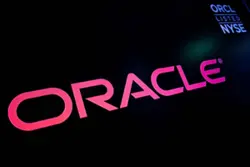FILE PHOTO: Virgin Galactic's passenger rocket plane VSS Unity is towed to the hangar after billionaire entrepreneur Richard Branson and his crew, reached the edge of space, at Spaceport America near Truth or Consequences, New Mexico, U.S., July 11, 2021. REUTERS/Joe Skipper
WASHINGTON (Reuters) -A spaceplane from Virgin Galactic blasted off toward the edge of space on Thursday carrying a crew of six, its first spaceflight test in nearly two years as the space tourism firm founded by Richard Branson prepares its long-awaited commercial service.
The company's twin-fuselage VMS Eve carrier plane took off from Virgin Galactic's Spaceport America site around 11:17 a.m. EDT, Virgin Galactic said on Twitter. The craft carried the VSS Unity spaceplane with a crew of six company employees to a planned altitude of roughly 50,000.
There, VSS Unity separated from its carrier craft and ignited an engine to boost itself toward space, the company confirmed on Twitter. The spaceplane is expected to reach an altitude of roughly 50 miles, where the crew will experience weightlessness for around 3 minutes.
Virgin Galactic's Unity 25 mission comes 22 months after billionaire Branson and employees rode to the edge of space aboard its centerpiece SpaceShipTwo spaceplane. It had hoped that high-profile mission would open the door to routine flights soon after.
A safety probe into Branson's flight by the U.S. Federal Aviation Administration delayed the plans, as did a lengthy spacecraft upgrade period that lasted longer than Virgin Galactic anticipated.
If all goes well, Virgin Galactic hopes to fly its first commercial mission in late June, a long-delayed research flight chartered for the Italian Air Force. The company then expects to carry out a mission roughly every month.
Virgin Galactic pilots Jameel Janjua and Nicola Pecile piloted the carrier aircraft VMS Eve. The spacecraft, untethered from the carrier craft, ignited a rocket engine and climbed to an altitude in microgravity of roughly 50 miles, the U.S.-recognized boundary of Earth's atmosphere.
The test mission, lasting roughly 90 minutes from takeoff to the spaceplane landing after spending three minutes in microgravity, follows the type of rides Virgin Galactic intends to provide for a backlog of some 800 customers. Most have paid between $250,000 and $450,000 for a ticket.
The company in April conducted a successful glide test with VSS Unity, dropping it at 47,000 feet for a free-fall back to its runway, without having ignited its engine to go toward space.
Mike Masucci and CJ Sturckow are piloting the spaceplane. In the cabin is the company's chief astronaut instructor Beth Moses, astronaut instructor Luke Mays, senior engineering manager Christopher Huie and Jamila Gilbert, internal communications senior manager.
(Reporting by Joey Roulette; Editing by David Gregorio)





